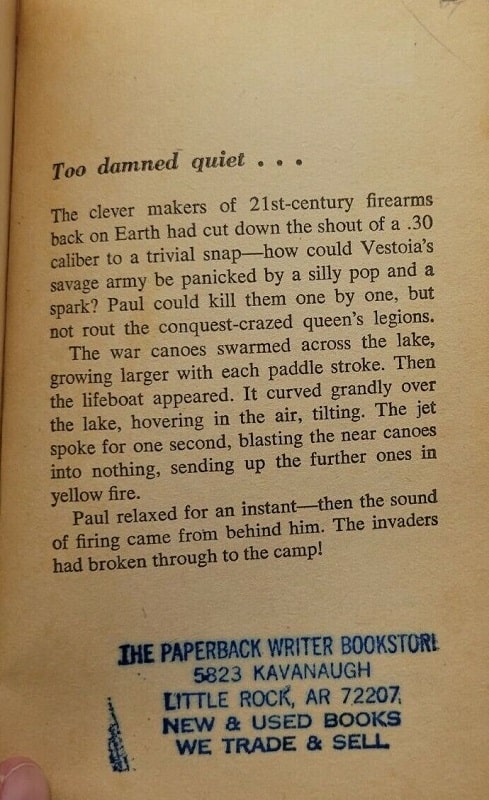To Violate the Prime Directive: West of the Sun by Edgar Pangborn
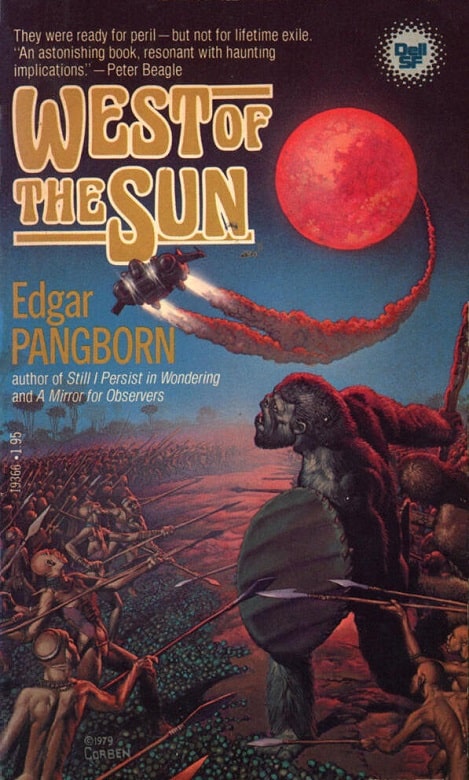 |
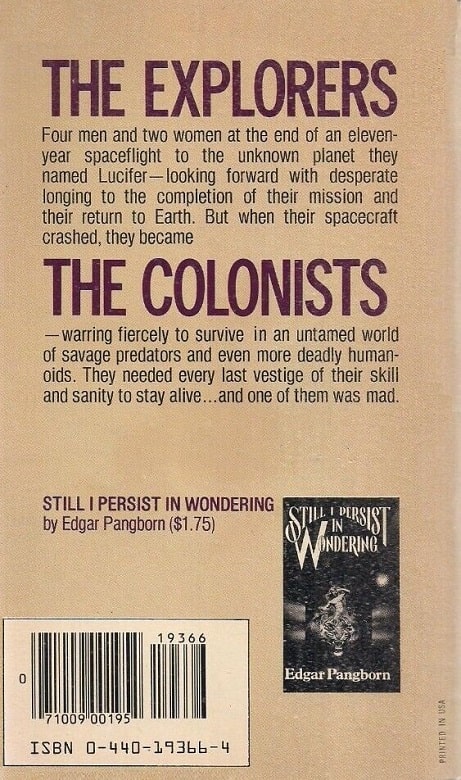 |
West of the Sun (Dell, July 1980). Cover by Richard Corben
Edgar Pangborn is remembered now as a writer for his postapocalyptic series Tales of a Darkening World, which began in 1962 with “The Golden Horn,” later turned into the first part of Davy, one of the nominees for the 1965 Hugo Award for Best Novel. But he began writing science fiction a decade earlier, with his novelette “Angel’s Egg,” and two years later, his first science fiction novel, West of the Sun, which I’ve just reread.
Even this early, Pangborn was already doing the kind of writing that came to be called humanistic science fiction. There is advanced technology in West of the Sun: It takes place on a planet of Alpha Centauri, arrived at after a decade of space travel, which implies speeds nearly half the speed of light; and the starship Argo carries various useful small devices. But all of them are lost, or stop working, during the events of the novel. The Argo is — in the literary sense — a vehicle: It exists to get the characters into the story, which is about something else entirely.
[Click the images for western-sized versions.]
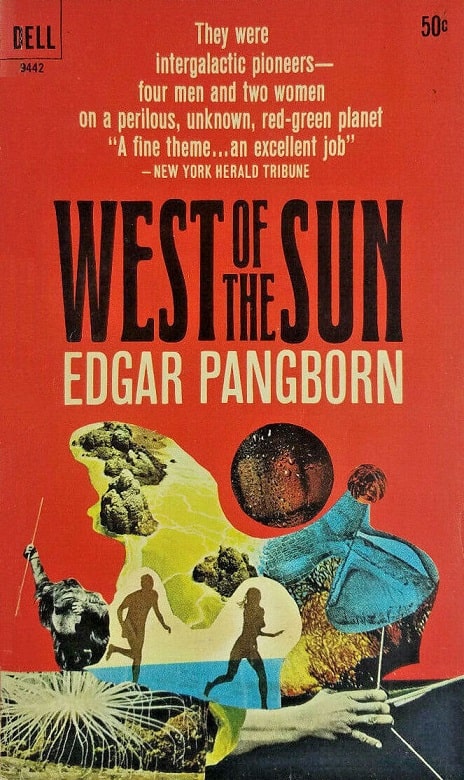 |
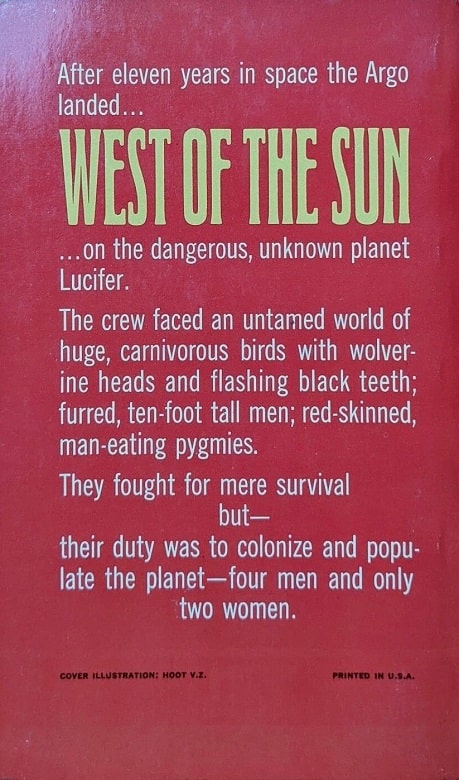 |
West of the Sun (Dell, July 1966). Cover by Hoot von Zitzewitz
The Argo’s crew is remarkably small: a captain, a biologist, an anthropologist, and two younger men, Ed Spearman, an engineer, and Paul Mason, a student anthropologist (both surnames can plausibly be read as symbolic). Apparently at the last minute, two orphaned girls in their teens were added, neither technically trained; Pangborn’s characters remark on the limited thought behind the decision, but the potential for conflict or abuse doesn’t come into view.
The captain dies during the departure from the solar system, after communication with Earth has been lost, but the voyage goes on. One of the two girls is black; all the rest are white — Pangborn’s future doesn’t seem to have an objection to interracial sexual relationships, at least when the black participant is a woman! The biologist is Israeli; all the rest seem to be Americans, though they were sent by a federal government extending over nearly half of Earth.
The planet, which they name Lucifer, is earthlike, but with higher gravity, a higher partial pressure of oxygen, and a hotter climate. Most of its terrain is desert or jungle; it fits Western images of “primitive” regions like New Guinea or sub-Saharan Africa. All the human castaways lose consciousness under the influence of some compound in its atmosphere, but wake up half a day later unharmed and experience no further effects; the experience seems like a symbolic rebirth.
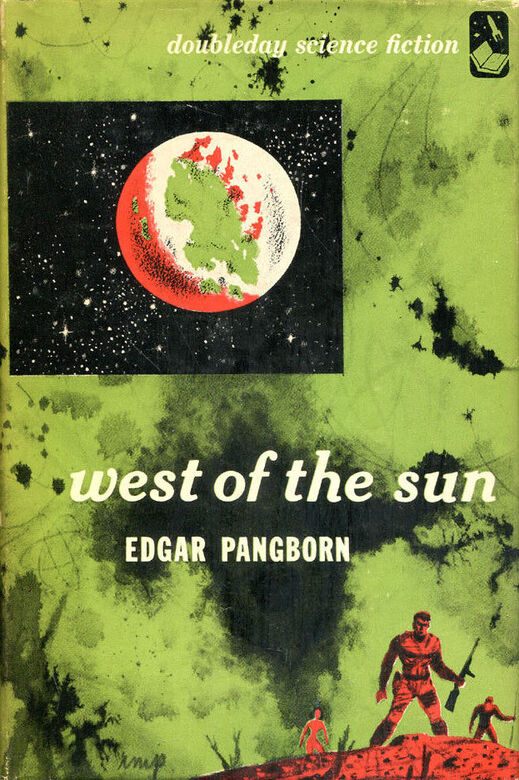 |
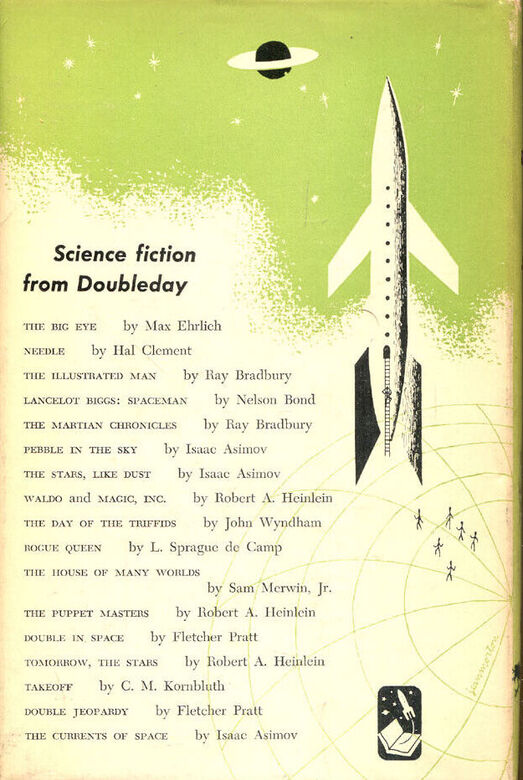 |
West of the Sun (Science Fiction Book Club, April 1953). Cover by Richard Powers
The important thing about Lucifer, though, is its inhabitants. There are two humanoid races, labeled “giants” and “pygmies.” The giants have almost no technology and a very simple language; the pygmies are Neolithic pristine states that practice war, slavery, and cannibalism. Pygmy women are larger and stronger than men and their societies are matriarchal. All of this reflects anthropological ideas that were widespread when Pangborn wrote, though already losing currency among scholars; they seemed jarringly oversimplified when I read them now.
The goal of the castaways is to violate what Star Trek christened “the Prime Directive”: to share the institutions and the ethics of their more advanced society. The giants welcome this; the pygmies resist it, going along reluctantly in recognition of superior force — and, to some degree, in admiration of it. The story reflects a saying of the older anthropologist, quoted by several different characters: “We are all one flesh” — and asks if this can be true. In particular, the viewpoint character, Paul Mason, is troubled by it.
The story falls into three parts. In the first, the human characters become acquainted with Lucifer and its peoples. In the second, they participate in a pygmy war, helping to defend the local communities against a larger imperial power that wants to conquer and enslave them. This part had some genuinely moving scenes, showing both the compromising of Mason’s ideals and the shared losses and struggles that bring the characters of all species together. The third part looks at the situation ten years later, contrasting the community that Mason has helped build, a peaceful republic, with the empire that Spearman has conquered, embracing violence rather than minimizing it.
Inside cover of the Dell paperback edition
Spearman’s subjects seem to speak a “pidgin English” that crudely imitates Tok Pisin; I’m not sure if Pangborn imagined all tribal peoples as developing similar creoles or Spearman as deliberately teaching that dialect, but the effect was jarring.
In terms we would now use, one thing that stands out about the human community is that it faces a genetic bottleneck: the black woman has children by all the men except Spearman, who has two sons by the white woman, but that’s very little genetic diversity. This is somewhat relieved by the arrival of a second ship from Earth — this one with three North Americans and a man from India.
At this point the novel’s final questions come into focus: Will the castaways go back to Earth, or stay and build a new society, and would further contact with Earth be desirable, or would it undermine the better world they’re trying to build? The key decision about this is made by the older anthropologist, which suggests that he’s been the protagonist all along, even though Mason has been the viewpoint character.
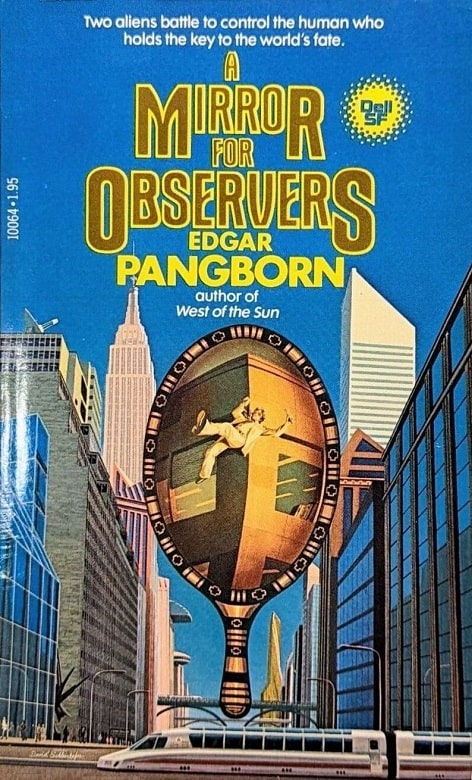 |
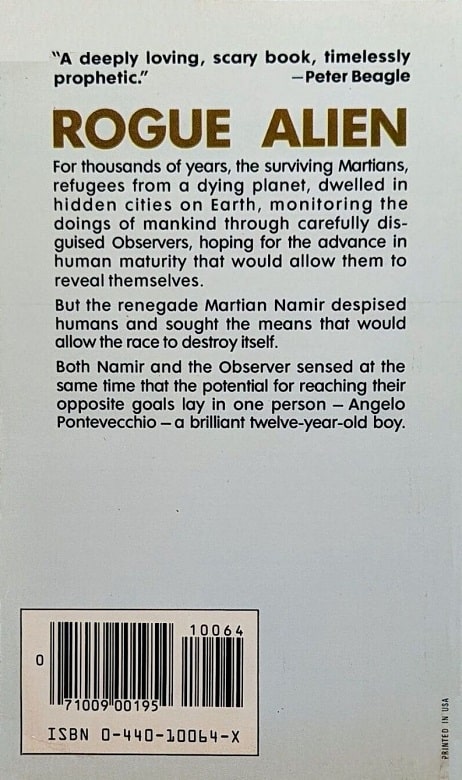 |
A Mirror for Observers (Dell, September 1980). Cover by David Schleinkofer
I’m struck by the small hints of continuity with Pangborn’s second novel, A Mirror for Observers: A reference to “the state papers of Abraham Brown,” a name taken in young adulthood by that novel’s protagonist, Angelo Pontevecchio; a world federal government that seems to have grown out of the Federalist Party of A Mirror for Observers.
There’s also a common theme: the second novel shows a small population of Martians trying to bring civilization to the primitive societies of twentieth-century Earth, a kind of ironic reversal of the first novel.
For all that Pangborn’s writing hadn’t fully developed this early, it seems that he was already working at humanistic science fiction, especially in his emphasis on ethical ideas and conflicts. I enjoyed rereading West of the Sun, and my continuing affection for it helps me forgive its flaws.
William H. Stoddard is a professional copy editor specializing in scholarly and scientific publications. As a secondary career, he has written more than two dozen books for Steve Jackson Games, starting in 2000 with GURPS Steampunk. He lives in Lawrence, Kansas with his wife, their cat (a ginger tabby), and a hundred shelf feet of books, including large amounts of science fiction, fantasy, and graphic novels.
